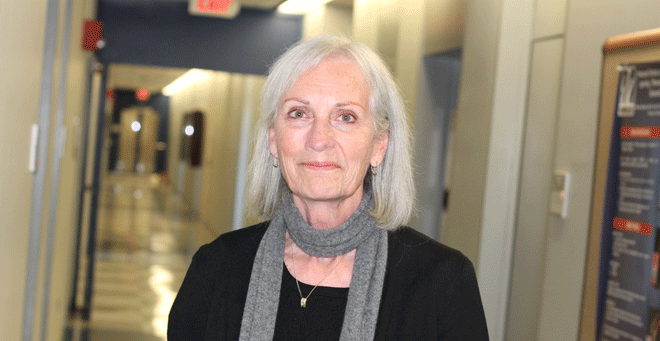 |
|
|
Linda Pape, MD |
Acute aortic dissection is a rare but potentially catastrophic medical emergency that strikes suddenly and is often fatal. Unfortunately, it is challenging to diagnose and treat. That is why UMass Medical School cardiologist Linda Pape, MD, joined a consortium of colleagues worldwide who established the International Registry of Acute Aortic Dissection to collect data from patients hospitalized with aortic dissections to help the medical community better recognize and treat the condition.
Aortic dissection is a tear in the wall of the aorta, the major artery carrying blood out of the heart, which can result in other organs failing by inhibiting blood flow to them or a buildup of blood leaking from the tear can then rupture the aorta completely. Either scenario is life threatening and requires immediate treatment. Recorded throughout history, from the death of King George II in 1760 to recent celebrity deaths, AAD is usually, but not always, characterized by sudden, intense chest pain.
“The problem is that there are many different presentations that are not always so obvious. There’s not always severe pain,” said Dr. Pape, professor of medicine and pathology. “IRAD participants have been committed to gathering data, and by publishing findings from the database, trying to keep acute aortic dissection in the forefront as a life-threatening diagnosis that’s often missed.”
Pape is the lead author of “Presentation, Diagnosis and Outcomes of Acute Aortic Dissection: 17-year Trends from the International Registry of Acute Aortic Dissection,” published earlier this year in the Journal of the American College of Cardiology
“We initially identified presenting features and outcomes,” Pape said of the registry. “But I have thought all along that it would be interesting to at some point relook at the data and see where we were then and where we are now.”
Ascending, or Type A dissections, which occur in the first part of the aorta, are most immediately life threatening and are treated with surgery. Descending, Type B dissections, which occur in other parts of the aorta, are initially managed medically, with aggressive blood pressure control, unless complications ensue. Significant rates of complications from Type B dissections—30 percent or more require later intervention—and little change in how Type A dissections are treated confirm the need to continue researching new, more effective therapies for aortic dissection.
But the review of data from 4,428 patients enrolled at 28 IRAD centers between 1995 and 2013 also yielded several encouraging findings. The use of CT scans to positively diagnose Type A dissections increased from 46 to 73 percent, surgical management for them increased from 79 to 90 percent and deaths for hospitalized Type A patients decreased from 31 to 22 percent. Most significantly, endovascular surgical management of Type B dissections with minimally invasive stenting procedures increased from 7 to 31 percent, reflecting not only the high complication rate of Type B dissections but also the increasing ability to treat them without open surgery.
“[Our work] has called attention to the entity and the improved outcomes, notably surgical,” said Pape. “While cardiothoracic surgeons treat Type A dissections, vascular surgeons have a major role in the expanded treatment of aortic diseases, including Type B aortic dissection” At UMass Memorial, vascular surgeon Andres Schanzer, MD, associate professor of surgery and quantitative health sciences, creates state-of-the-art customized stents, which were recently featured in the Worcester Telegram & Gazette.
“In the past the only option for complications of Type B dissections was open surgery, which had many complications.” said Pape. “Now, with stents being used for much of the repair work, it’s a new frontier in terms of treatment.”